SHRI SHIVAJI SCIENCE COLLEGE, AMRAVATI
DBT STAR COLLEGE PROJECT ACTIVITY
ACTIVITY REPORT
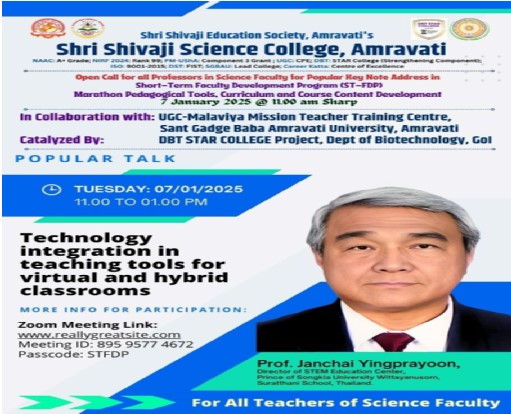
Foodstuff Adulteration Detection - A Skill base Activity
Activity Dates: 15.07.2025
Type of Activity: Students Workshop
Organizing Department: Department of Microbiology
Program Coordinators: Dr. Ashruta A. Gawali, Dr. Rasika R. Jane, Prof. Suwarna Mankar
Head of the Department: Dr. R. C. Maggirwar
External Collaborator (if any): No
Objectives:
- To educate undergraduate students on common types of food adulteration and their health hazards.
- To demonstrate scientific yet simple tests for detecting adulterants in everyday food items.
- To provide practical exposure through hands-on learning and observation.
- To involve postgraduate students as demonstrators, encouraging peer-to-peer knowledge exchange.
- To evaluate student learning through MCQ-based assessment and capture their reflections via feedback forms.
No of Beneficieries: 70
Classes Involved: B.Sc-I, M.Sc-I &II (Microbiology & Biotechnology)
Venue of the Activity: U.G. Lab Department of Microbiology, Shri Shivaji Science College, Amravati, M.S.
Activity Report:
Title of the Activity : "Foodstuff Adulteration Detection – A Skill-Based Activity"
Organized by : Department of Microbiology & Biotechnology, Shri Shivaji Science College, Amravati
Date and Time : 15th July 2025 | 10:00 AM – 12:00 Noon
Target Group : B.Sc. First Year Students
Total Participants : 70 Undergraduate Students
Resource Team : M.Sc. Part I and II Students (PG Demonstrators)
Activity Coordinators: Dr. Ashruta A. Gawali, Dr. Rasika R. Jane, Prof. Suwarna Mankar
Approved under : DBT Star College Scheme
1. Introduction:
Food adulteration is a persistent problem in the Indian food industry and poses a major public health concern. With increasing reports of food frauds and contamination, the responsibility of creating awareness about this issue lies not only with regulatory bodies but also with educational institutions that are nurturing future scientists and responsible citizens.
In light of this, the Department of Microbiology & Biotechnology, Shri Shivaji Science College, Amravati, organized a Skill-Based Awareness Activity on "Foodstuff Adulteration Detection" under the DBT Star College Scheme. The event was aimed at educating students on how common food items are adulterated, how to identify such adulteration using scientific yet simple techniques, and to promote the concept of safe food consumption.
This hands-on session served as a platform to integrate textbook knowledge with real-life applications. Students learned through peer-led demonstrations, participated in group discussions, completed an MCQ-based learning assessment, and gave structured feedback. The outcome was a highly engaging learning experience that reflected the spirit of experiential education promoted under the DBT Star College initiative.
2. Objectives of the Activity:
The specific aims of the activity were:
1. To educate undergraduate students on common types of food adulteration and their health hazards.
2. To demonstrate scientific yet simple tests for detecting adulterants in everyday food items.
3. To provide practical exposure through hands-on learning and observation.
4. To involve postgraduate students as demonstrators, encouraging peer-to-peer knowledge exchange.
5. To evaluate student learning through MCQ-based assessment and capture their reflections via feedback forms.
6. To cultivate consumer awareness, analytical thinking, and responsible behavior regarding food quality.
3. Description and Methodology of the Activity:
The event was conducted in the Microbiology laboratory, where necessary materials and reagents were pre-arranged at various demonstration counters. The session began with a short presentation on “Understanding Food Adulteration”, which introduced students to:
Types of adulterants: intentional and incidental
Examples: water in milk, chalk powder in sugar, soap in oil
Health hazards: gastrointestinal issues, poisoning, organ damage
Laws and consumer rights under the Prevention of Food Adulteration Act
3.1. Demonstration Counters and Tests Conducted:
PG students divided the demonstrations into several stations, with each station focused on a different food item: Turmeric, chilli, jaggery, sugar,salt,besan,honey, mustard oil etc.
3.2. Student Involvement and Group Rotation:
Students were divided into small groups and rotated through each demonstration counter. PG students explained the principle, procedure, observation, and health effects for each test. Students were encouraged to ask questions and record observations in their activity worksheets.
The use of easily available reagents made the activity relatable and replicable even outside the lab. Students expressed surprise at how many household items can be tested without complex instruments.
4. Post-Activity Engagement:
4.1. MCQ Test:
After completing all demonstrations, an MCQ-based test was conducted to assess the students' understanding. The test contained 15 questions based on adulteration types, health hazards, test procedures, and observations. The scores reflected strong conceptual clarity, especially for students who actively interacted during demonstrations.
4.2. Feedback Collection:
A structured feedback form was circulated post-activity. Students rated the program on the following:
• Relevance of topic
• Clarity of demonstration
• Usefulness of tests
• Interaction and doubt-solving
• Overall satisfaction
Highlights from feedback:
100% students found the topic relevant to real life.
Over 95% rated the demonstrations as clear and easy to understand.
Most appreciated the peer-teaching model by PG students.
Several suggested similar sessions on food labelling, expiry identification, and kitchen hygiene.
5. Outcomes of the Activity:
The activity yielded multiple academic and practical outcomes:
• Academic Outcomes:
1. Strengthened theoretical understanding of adulteration from a microbiological and chemical perspective. Reinforced scientific principles behind simple food testing methods.
2. Promoted experiential and skill-based learning.
• Practical/Behavioural Outcomes:
1. Students became more alert consumers, developing the habit of checking food quality.
2. Encouraged low-cost testing at home and awareness building in their communities.
3. Boosted PG students’ leadership, presentation, and mentoring skills.
• Skill-Based Outcomes:
1. Familiarity with qualitative food testing techniques.
2. Ability to interpret basic colorimetric reactions.
3. Improved group communication and scientific dialogue.
• Long-Term Outcomes:
1. Scope for community outreach activities led by trained students.
2. Potential to include this activity as a recurring practical module.
3. A step toward nurturing microbiology students as responsible, skilled individuals.
6. Impact and Reflections:
This activity had a strong impact in terms of both scientific skill development and real-life awareness. By using everyday food items and accessible materials, students were able to relate academic knowledge to personal and social practices.
Many students reported that they planned to share this knowledge with family members, especially homemakers, to help ensure food safety at the household level. The approachable nature of the tests and the informal, student-led learning environment made the entire session comfortable and interactive.
Importantly, involving PG students not only reduced the teacher load but also fostered a collaborative and student-driven educational atmosphere — a key goal of the DBT Star College framework.
7. Acknowledgments:
We sincerely thank:
Dr. R. C. Maggirwar – Head, Department of Microbiology & Biotechnology
Dr. D. D. Khedkar – DBT Star College Coordinator
Dr. G. V. Korpe – Principal, Shri Shivaji Science College
For their constant encouragement, academic guidance, and institutional support throughout the planning and execution of the activity.
We also appreciate the efforts of our M.Sc. student volunteers, whose effective demonstrations made the program a success, and our B.Sc. participants, whose enthusiasm gave life to this learning experience.
8. Conclusion:
The “Foodstuff Adulteration Detection – A Skill-Based Activity” organized under the DBT Star College Scheme was a resounding success. It effectively blended theoretical concepts with practical utility, empowering students to recognize adulteration and understand its risks.
This event stands as a model of interactive, student-centric learning, where science meets society. We plan to continue such activities in future semesters, involving more departments and expanding outreach to schools and communities.
Outcomes:
- Strengthened theoretical understanding of adulteration from a microbiological and chemical perspective. Reinforced scientific principles behind simple food testing methods.
- Promoted experiential and skill-based learning
- Students became more alert consumers, developing the habit of checking food quality.
- Ability to interpret basic colorimetric reactions.
- Potential to include this activity as a recurring practical module
Photos:
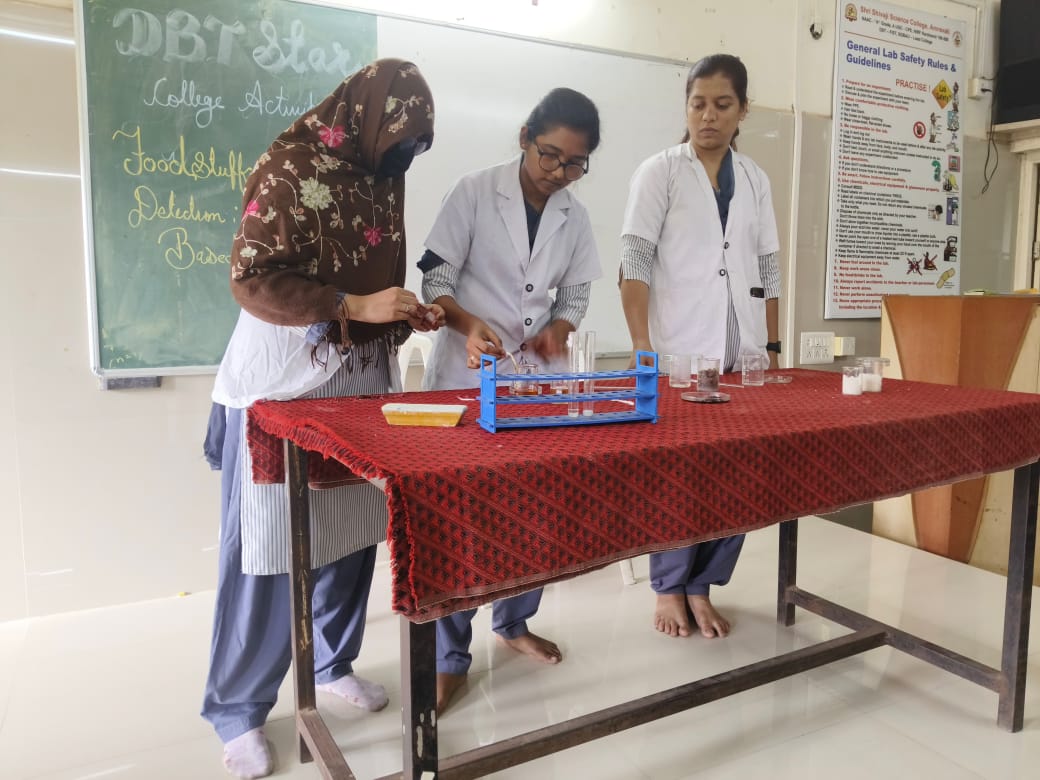 Awareness about food adulteration | 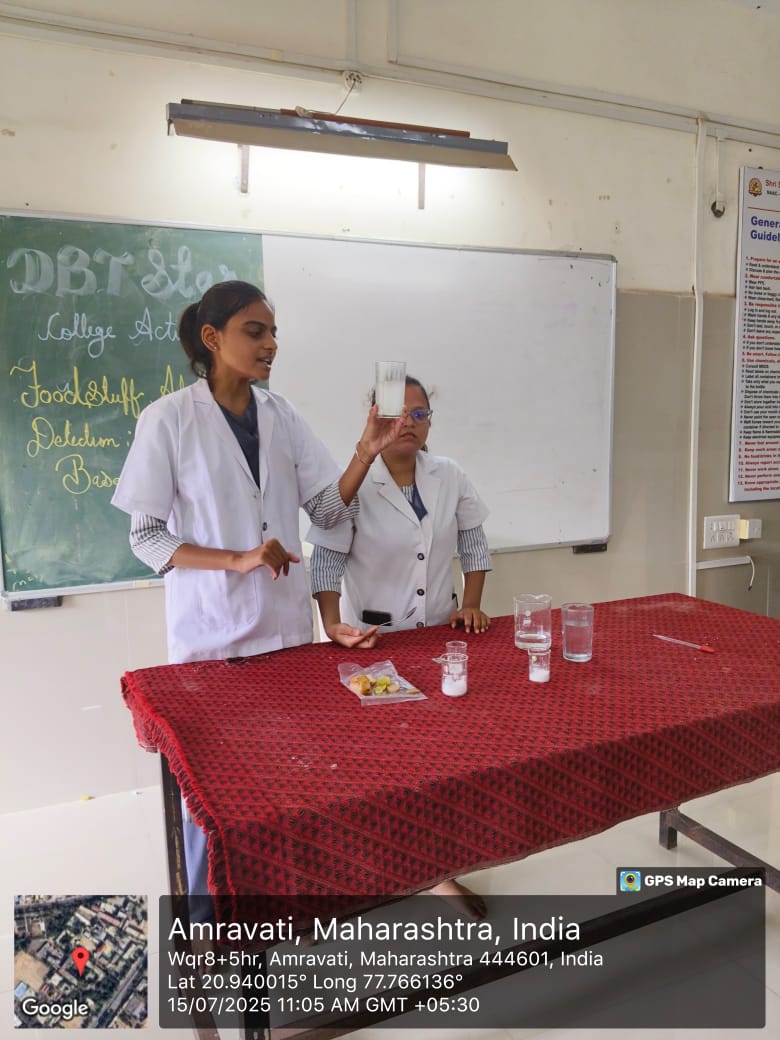 Adulteration Demonstration |
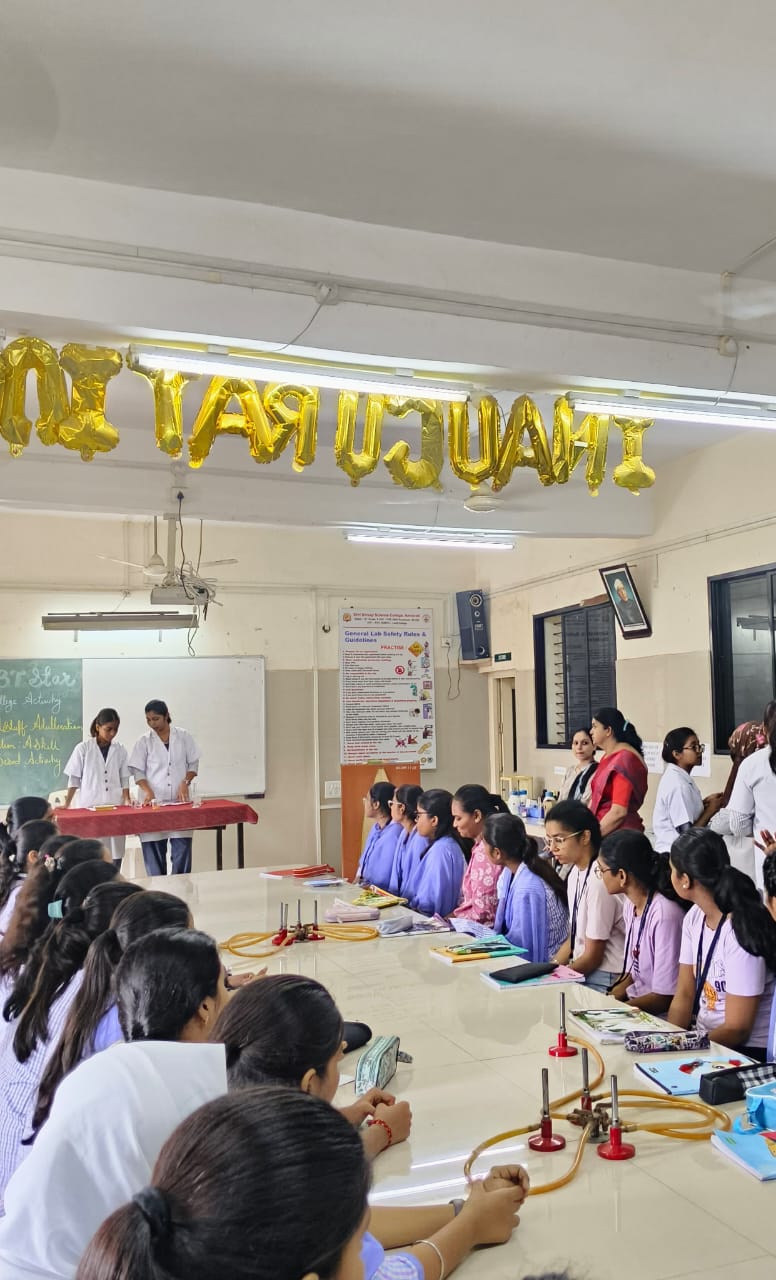 Learning the truth behind what we eat | 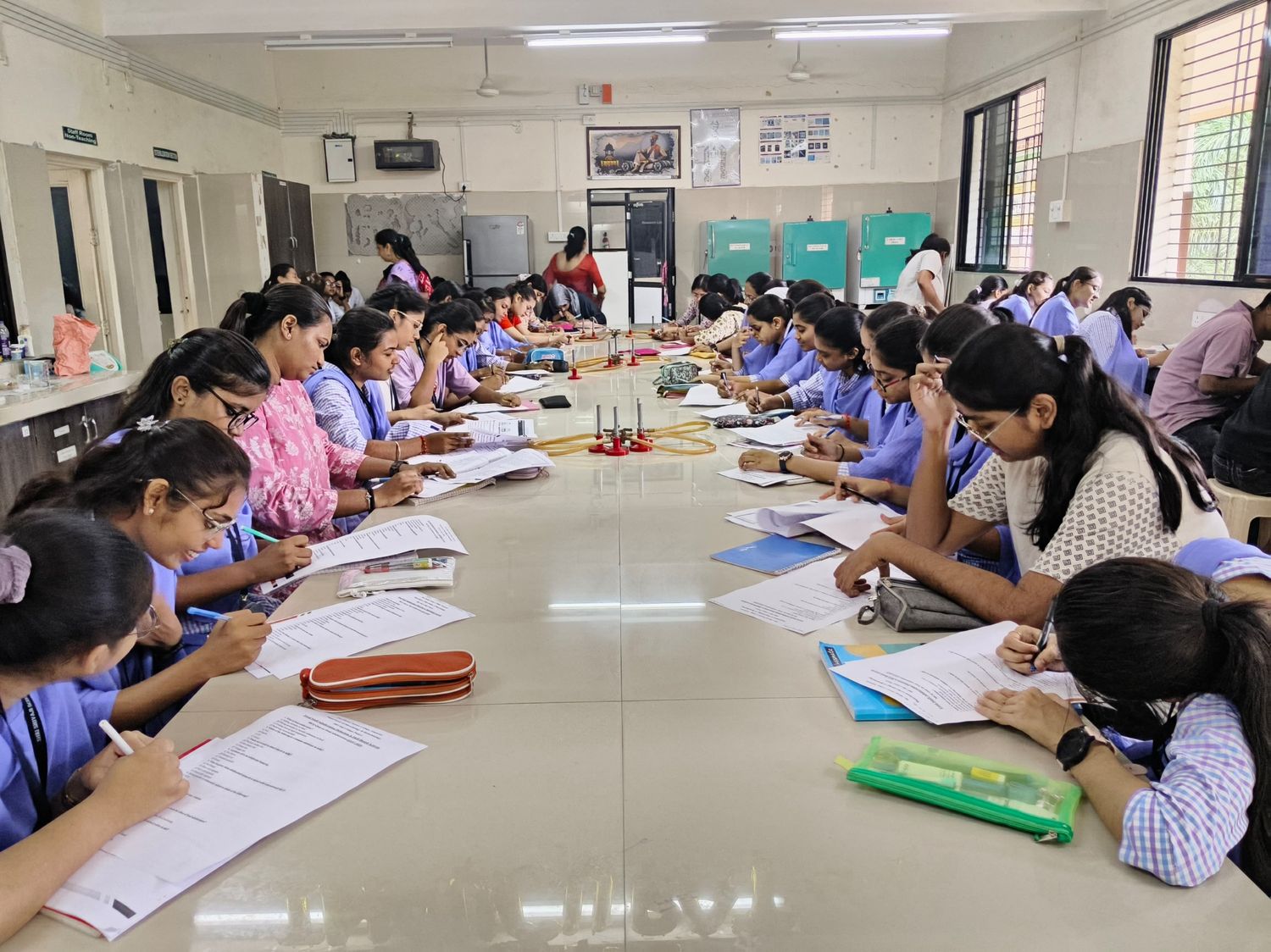 Hands on activity on adulteration |
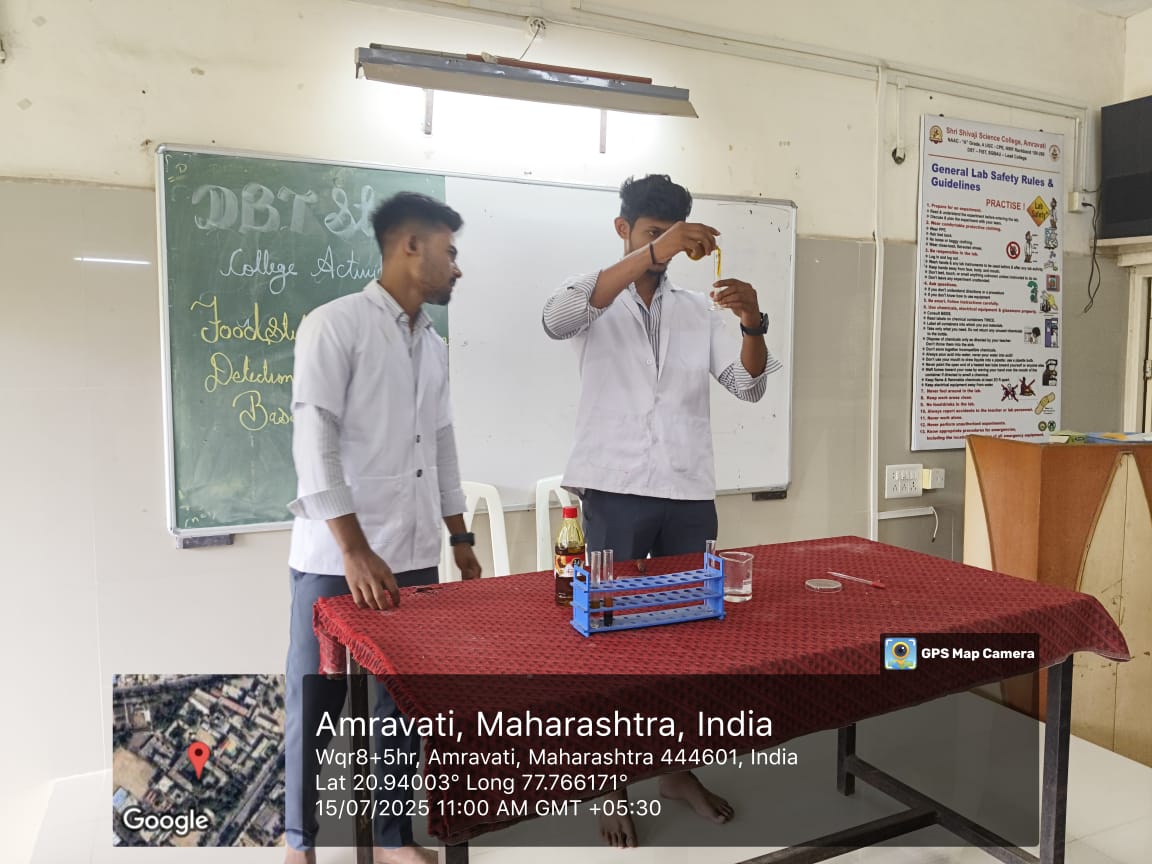 Testing food samples for purity |  Say no to adulteration |
Attendance Sheet:
 |
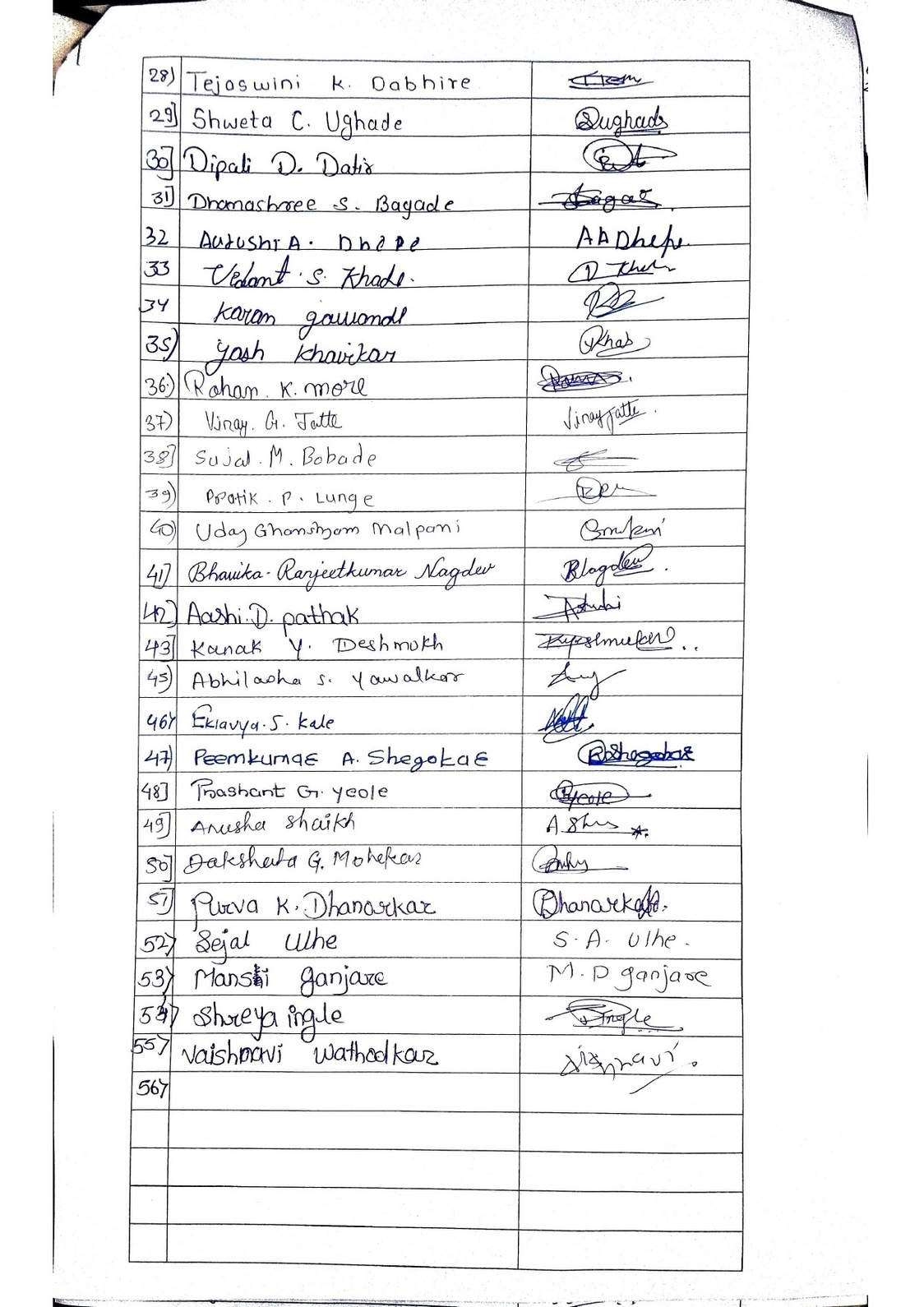 |